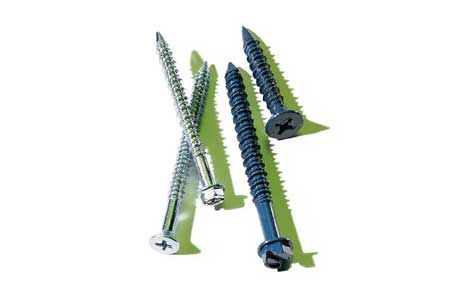Attaching fixtures to concrete, brick, or stone can be challenging for many homeowners. Unlike wood, which allows screws to grip and hold securely, masonry requires specialized anchors to distribute the load and prevent crumbling or cracking.
Masonry materials’ density and composition can vary greatly, affecting your fastener choice and installation method. That’s why selecting the appropriate anchor for your specific project and base material is crucial. Things like the item’s weight, stone type, and environmental conditions all help determine the correct fastener for the job. We’ll explain what you need to know in our guide.
Tools for Drilling in Masonry
The two most important components when drilling in masonry are the drill and the drill bits.
Choosing the Right Drill
For small projects with few holes to drill, an electric drill with a cord will work. However, for larger projects or holes 3/8-inch in diameter or larger, we recommend a hammer drill. These combine rotary motion with a hammering action, making them more effective for masonry work.
Selecting Appropriate Drill Bits
Carbide-tipped masonry bits are essential for drilling into concrete, brick, or stone. While inexpensive bits under $10 can work for occasional small holes, investing in industrial-quality bits is worthwhile for more frequent use. These higher-grade bits are machined rather than twisted and use quality steel and carbide, extending their lifespan. They’re now available at many hardware stores, often costing just slightly more than lower-end models.
For heavy-duty work, consider using bits designed specifically for hammer drills. These have a slight back-bevel on the carbide tip, called a negative angle, which helps prevent chipping during use.
Types of Masonry Anchors and Their Uses
There are several types of masonry anchors, each designed for specific applications and base materials. Understanding the differences will help you choose the right fastener for your project.
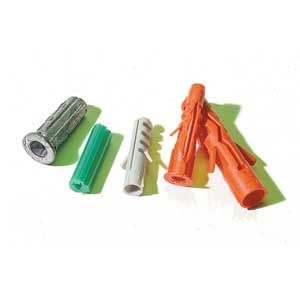
Plastic and Lead Anchors
Plastic and lead anchors are among the most common and versatile options for light to medium-duty applications. They work by expanding within the drilled hole as a screw is inserted, creating a tight fit. Plastic anchors are suitable for lighter loads in softer masonry materials, while lead anchors can handle slightly heavier loads and work well in harder materials.
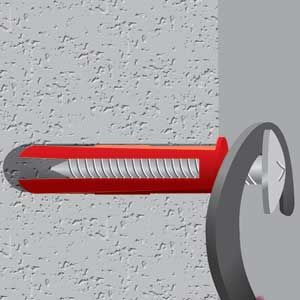
Toggle Bolts
Toggle bolts are ideal for use in hollow masonry materials, such as concrete blocks. They feature spring-loaded wings that open up once inserted through the drilled hole. As you tighten the screw, the wings are drawn up against the backside of the block, distributing the load over a larger area. Toggle bolts are effective for light to medium loads but can be challenging to remove once installed.
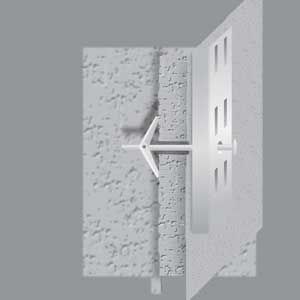
Lag Shields
Lag shields are internally threaded anchors designed to work with lag screws in various stone materials. They’re relatively inexpensive and widely available. Lag shields come in different lengths to accommodate different base materials—longer versions for softer materials and shorter ones for harder materials to reduce drilling time. When installing, check that the lag shield fits snugly in a pilot hole slightly larger than the lag screw diameter.
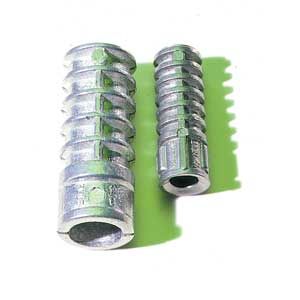
Concrete Screws
Concrete screws, such as Tapcons, have gained popularity among contractors due to their versatility and ease of installation. These screws are driven into slightly undersized holes, creating a tight friction fit. They work well in concrete, block, and brick and are available in various sizes and materials, including stainless steel for outdoor use. Concrete screws can handle heavier loads than many plastic and lead anchors and have the advantage of being more easily removable.
Advanced Masonry Fasteners
For more demanding applications or heavier loads, these advanced masonry fasteners might be a better fit.
Drop-In Anchors
Drop-in anchors are internally threaded to accept machine bolts and sit flush with the surface. They’re primarily designed for use in concrete but can also work in some thicker stone materials. Installation requires a special setting tool to expand the anchor within the hole. Drop-in anchors offer high pullout and shear resistance, especially in dense base materials. Proper hole depth is critical for these anchors to function correctly.
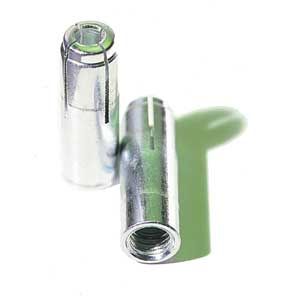
Hammer Drive Anchors
Hammer drive anchors come in two main types. One consists of a screw or nail that expands a metal or plastic sleeve as it’s driven into place. The other is a one-piece anchor with a bend in the shaft that compresses against the sides of the hole when hammered in. These anchors can be used in concrete, block, brick, or stone and are best for light to medium loads. Some types have withdrawal resistance comparable to concrete screws of the same size but are not removable once installed.
Wedge and Sleeve Anchors
Wedge and sleeve anchors are heavy-duty fasteners designed for high-load applications in solid materials like concrete. They work by expanding against the sides of the drilled hole as the bolt is tightened, creating a very secure hold. These anchors are great for attaching heavy equipment or structural elements to masonry surfaces.
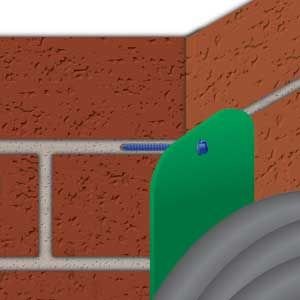
Proper Techniques for Drilling in Masonry
Successful masonry fastening starts with good drilling techniques.
Figure Out Hole Depth and Diameter
The depth and diameter of the hole will determine the anchor’s holding ability. Always follow the manufacturer’s instructions carefully. Generally, the hole should be slightly deeper than the anchor’s length to allow for any debris at the bottom. The diameter should match the anchor size specified by the manufacturer.
Adjust Pressure and Drill Speed
Finding the right combination of pressure and drill speed often requires some trial and error. After drilling a few holes, you should get a feel for what works best with your specific masonry material.
Safety Considerations When Working with Masonry
Safety should always be a top priority when working with masonry. Here are some important precautions to take.
Eye and Ear Protection
Always wear safety glasses to protect your eyes from flying debris and dust. Ear protection is also essential when using power tools, especially hammer drills, to prevent hearing damage from prolonged exposure to loud noises.
Dust Control Measures
Drilling into masonry generates a significant amount of dust, which can be harmful if inhaled. Use a dust mask or respirator to protect your lungs. Consider using a dust collection system or having a helper hold a vacuum near the drilling site to minimize airborne particles.
Special Applications and Heavy-Duty Fastening
For larger projects or particularly challenging materials, specialized tools can make the job easier and more efficient.
Using Hammer Drills for Large Jobs
Hammer drills are ideal for larger masonry projects. These tools combine rotary motion with a hammering action, making them much faster and more effective in concrete and other materials. Many hammer drills can switch between hammer mode and standard rotary mode, giving you versatility for different materials.
Rotary Hammers for Tough Materials
For the toughest materials or extensive drilling, go with a rotary hammer. These industrial-grade tools turn more slowly than standard drills but deliver a much more forceful hammering action. Rotary hammers require special bits designed to withstand the intense pounding. When working with particularly hard or abrasive materials like red brick or certain stone, look for bits with extra-hard carbide tips for better performance and longevity.
Troubleshooting Common Masonry Fastening Issues
Even with the right tools and techniques, you may encounter challenges when fastening to masonry. Here are some common issues and solutions:
- Anchor not expanding properly: Make sure the hole is clean and free of dust. Use a wire brush and compressed air to clean the hole before inserting the anchor.
- Anchor pulling out: The load may be too heavy for the anchor type. Consider using a stronger anchor, or multiple anchors to distribute the load.
- Anchor spinning in hole: The hole may be too large. Try a larger anchor, or fill the hole with epoxy before reinserting the anchor.
- Concrete cracking: This can occur if the anchor is too close to the edge of the concrete. Check that you’re following recommended edge distance guidelines for your anchor type.
- Difficulty drilling: You may be encountering rebar. Try moving the hole location slightly, or use a rebar-cutting drill bit if necessary.
